Did Ancient Romans Reach The Americas Long Before Columbus?
Ellen Lloyd - AncientPages.com - Long before the arrival of Christopher Columbus (1451 - 1506), North and South America had been visited by other ancient civilizations. It is well-known that Christopher Columbus did not discover the New World in 1492.
Still, many researchers suggest among these first visitors were the Vikings, Chinese, Phoenicians, and probably the Celts. There is evidence that numerous other ancient civilizations visited the Americas long before Columbus accidentally stumbled upon the New World that was already inhabited.
Did ancient Roman ships reach the shores of America? Credit: Adobe Stock - Massimo Todaro
Did ancient Romans also cross the ocean and reach the shores of America some 2,000 years before Christopher Columbus?
Many ancient Roman coins have been unearthed in North America, but it is not easy to regard these artifacts as evidence of Pre-Columbian transoceanic contact. These ancient coins could have been carried by the Spaniards who came with Columbus. However, while exploring this theory, one should investigate other curious artifacts that point to the ancient Roman presence in the Americas.
Does The Tecaxic-Calixtlahuaca Head Offer Evidence Of Pre-Columbian Transoceanic Contact?
One of the most trustworthy artifacts of ancient Roman presence in the Americas is the small Tecaxic-Calixtlahuaca head of supposed Roman origin found in Mexico back in 1933.
In 1933, archaeologist José García Payón discovered a small head with "foreign" features in a burial at Calixtlahuaca, about 60 km west of Mexico City in the Toluca Valley.
Calixtlahuaca is one of the very few Aztec-related urban sites, of which architecture and stone sculpture survived until today. This was a site where the Aztecs worshiped the snake-bird God Ehecatl.
The burial was under two undisturbed cemented floors that antedated the destruction of Calixtlahuaca by the Aztecs in A.D. 1510.
García Payón identified numerous cultural pieces found with the head belonging to the Azteco-Matlatzinca period of 1476-1510. Cortez did not land at Veracruz until 1519 and did not conquer the Aztecs until 1521, so central Mexico was still pre-Hispanic in 1510.
In 1961, the Austrian anthropologist Robert Heine-Geldern examined the head and declared that it derived "unquestionably" from the Hellenistic-Roman school of art.

The Calixtlahuaca Head. 1999. Image credit: Romeo Hristov - The Ohio State University
He found that its "distinctive Naturalism" suggested a date "around AD 200." Heine-Geldern was an expert on South-East Asia, but he reported in a communication quoted by García Payón (1961) that his view that Roman from circa AD 200 had been confirmed by Prof. Boehringer, then president of the German Archaeological Institute.
The head was then largely forgotten until 1990 when archaeology student Romeo Hristov began searching for it. Two and a half years later, he located it in storage in the National Museum of Anthropology in Mexico City, misclassified as Colonial.
In an interview in one of the leading Italian newspapers, prompted by the Hristov and Genovés paper, Prof. Bernard Andreae, the current director of the German Archaeological Institute in Rome, gave his opinion of the head: "It is Roman without any doubt… The stylistic examination tells us, more precisely, that it is a Roman work of the second century after Christ. It presents, in the cut of the hair and the shape of the beard, traits typical of the Severian emperors, exactly the 'fashion' of the period.
The Forschungstelle Archäometrie at the Max-Planck-Institut für Kernphysik in Heidelberg, Germany, has performed a thermoluminscence (T.L.) test on material from the head to determine the time that has elapsed since its manufacture. Technical difficulties prevented the determination of a precise T.L. date, but the lab did conclude that "the figurine has an apparent T.L. age range of between 730 years and 2880 years."

Head from Caliztlauac. 1999. Photo credit: Romeo Hristov
So, it seems that the mysterious Tecaxic-Calixtlahuaca head could be considered one of the best pieces of evidence for ancient trans-Oceanic contact. Columbus was by no means the first to visit the continent.
However, it should be added the controversial Tecaxic-Calixtlahuaca head has been questioned by many scientists who state it is a fake.
Some have also dismissed the possibility the head is of ancient Roman origin and suggest this artifact is evidence of Norse presence in the Americas. It has occasionally been proposed the figure's unusual headdress bears a possible resemblance to Norse or Viking headgear.
Why Is America Depicted On Ancient Roman Maps?
Author and researcher Carl Lehrburger investigated which ancient civilizations reached the Americas before Columbus and noted that ancient Romans were familiar with the Americas, as can be seen on their maps.
In his book Secrets of Ancient America: Archaeoastronomy and the Legacy of the Phoenicians, Celts, and Other Forgotten Explorers, Lehrburger points out that "Other writers have provided evidence that Roman ships traveled to India, China, and Southeast Asia. Unknown to many, however, is the abundant evidence proving they also made it to North and South American shores.
As mentioned, Roman-era maps show Antipodes as South America along with the Gulf of Mexico, Florida, and Brazil. Also, the 1414 map of Albertin de Virga shows the Peruvian coast and calls it Ca-paru, which is the same as the Land of Per on the 1436 Andrea Bianco map, demonstrating that Peru was named earlier than Pizarro's arrival in 1521."
Other Ancient Roman Artifacts Discovered In North And South America
Several curious ancient artifacts linked to the Roman Empire have been unearthed in the Americas, but these objects have never gained much publicity, probably due to their controversial nature. Among these artifacts, we find "inscriptions, coins, and many ceramic amphorae (vaselike storage jars) that were recovered off the coasts of North and South America.
David Pratt, who authored "The Ancient Americas: Migrations, Contacts, and Atlantis," reported that amphorae from the first century A.D. were discovered off the
coast of Maine in 1971 and 1972. Pratt also noted that in 1972, scuba divers off the coast of Honduras found the hull of a ship with a cargo of Roman amphorae. More amphorae were discovered in South America, off the coast of Venezuela and fifteen miles off the coast of Rio de Janeiro, Brazil, in 1976.
Again, off the coast of Brazil, divers discovered a sunken ship from the first century B.C. containing hundreds of Roman urns. Roman amphorae were also discovered off Venezuela two years later. However, the Brazilian government banned any investigation to protect the reputation of the Portuguese explorer Pedro Álvares Cabral, who is credited with "discovering Brazil."
Can evidence of ancient Roman presence be found in the Americas? Credit: Public Domain
These Roman vases were used to store and transport liquids, and their prevalence suggests trading routes were well established.
As for North America, judge and historian John Haywood (1762–1826) described Roman coins and buttons the size of half-dollars and made between A.D. 138 and A.D. 259 that were dug up by settlers in Tennessee and Kentucky between 1819 and 1821.
More recently, in 1954 or 1955, near the Red River at Terral, Oklahoma, a concave-shaped coin made into a decorative adornment was found in a previously plowed field. On one side could be seen an inscribed bull over a dolphin with a Latin inscription above that spelling the name of a city, Thurium (an Athenian colony in Italy around 200 B.C.). On the other side was a portrait of Athena." 1
One or two peculiar ancient artifacts can be dismissed as forgeries. Still, when so many artifacts of Roman origins have been discovered on the continent, it seems foolish not to consider ancient Romans visiting South and North America. We know ancient Romans were excellent engineers who constructed remarkable aqueducts, and the most sophisticated systems of roads. We credit ancient Romans with several inventions we used today. Yet, many still have difficulties considering the possibility ancient Romans visited the Americas for some reason.
Updated on January 17, 2024
Written by Ellen Lloyd – AncientPages.com
Copyright © AncientPages.com All rights reserved. This material may not be published, broadcast, rewritten or redistributed in whole or part without the express written permission of AncientPages.com
Expand for references- Carl Lehrburger - Secrets of Ancient America: Archaeoastronomy and the Legacy of the Phoenicians, Celts, and Other Forgotten Explorers
- Hristov, Romeo H. (1994), "The little "Roman" head of Calixtlahuaca, Mexico: Some reflections", NEARA Journal, 28 (3–4): 68–69
More From Ancient Pages
-
 Ancient Egyptians Invented World’s Oldest Egg Ovens And They Are Still In Use
Ancient History Facts | Jul 6, 2021
Ancient Egyptians Invented World’s Oldest Egg Ovens And They Are Still In Use
Ancient History Facts | Jul 6, 2021 -
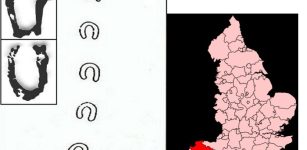 On This Day In History: ‘Devil’s Footprints’ Appeared In Devon, England – Feb 8/9, 1855
News | Feb 8, 2017
On This Day In History: ‘Devil’s Footprints’ Appeared In Devon, England – Feb 8/9, 1855
News | Feb 8, 2017 -
 Cats Were Rare And Expensive During The Viking Age – Spectacular Discovery Reveals Why
Featured Stories | Jan 12, 2017
Cats Were Rare And Expensive During The Viking Age – Spectacular Discovery Reveals Why
Featured Stories | Jan 12, 2017 -
 Ancient Recycling Technology Modern World Still Hasn’t Invented
Civilizations | May 5, 2018
Ancient Recycling Technology Modern World Still Hasn’t Invented
Civilizations | May 5, 2018 -
 A 5,000-Year-Old Anatolian Sword Identified In Armenian Monastery In Venice
Artifacts | Feb 28, 2020
A 5,000-Year-Old Anatolian Sword Identified In Armenian Monastery In Venice
Artifacts | Feb 28, 2020 -
 Unexplained Mystery Of The Glowing Woman Who Baffled Scientists
Featured Stories | Jun 6, 2022
Unexplained Mystery Of The Glowing Woman Who Baffled Scientists
Featured Stories | Jun 6, 2022 -
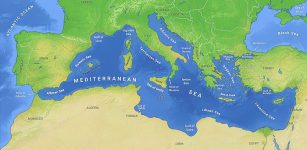 Mediterranean Migration Was Low Over 8,000 Years – New Study
Archaeology | Mar 3, 2021
Mediterranean Migration Was Low Over 8,000 Years – New Study
Archaeology | Mar 3, 2021 -
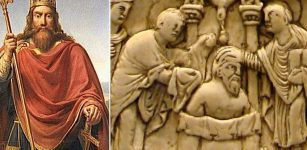 What Was Lex Salica?
Ancient History Facts | Dec 13, 2017
What Was Lex Salica?
Ancient History Facts | Dec 13, 2017 -
 2,000 Year-Old Books Written By Bian Que The Divine Healer Unearthed
Artifacts | May 13, 2014
2,000 Year-Old Books Written By Bian Que The Divine Healer Unearthed
Artifacts | May 13, 2014 -
 Probably The Oldest Star Map Discovered In Stone Chamber Of The Kitora Tomb, Asuka Nara, Japan
Ancient History Facts | Jul 19, 2015
Probably The Oldest Star Map Discovered In Stone Chamber Of The Kitora Tomb, Asuka Nara, Japan
Ancient History Facts | Jul 19, 2015 -
 Legend Of Evil Spearfinger And The Cherokee Who Were Guided By Celestial Beings
Featured Stories | Feb 17, 2020
Legend Of Evil Spearfinger And The Cherokee Who Were Guided By Celestial Beings
Featured Stories | Feb 17, 2020 -
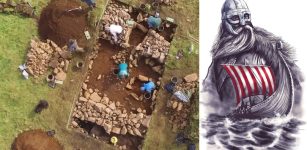 Possible Viking Boat Burials Discovered On The Isle Of Mull
Archaeology | Sep 12, 2022
Possible Viking Boat Burials Discovered On The Isle Of Mull
Archaeology | Sep 12, 2022 -
 4000-Year-Old Large Bronze Age Cemetery Discovered In Lower Silesia, Poland
Civilizations | Sep 21, 2015
4000-Year-Old Large Bronze Age Cemetery Discovered In Lower Silesia, Poland
Civilizations | Sep 21, 2015 -
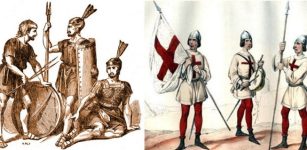 Police Forces That Kept Order In Ancient Streets
Ancient History Facts | Jun 12, 2018
Police Forces That Kept Order In Ancient Streets
Ancient History Facts | Jun 12, 2018 -
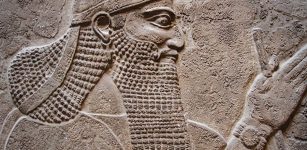 Unexpected Discovery Of 600 B.C Assyrian Palace In Shrine Destroyed By Isil Militants
Archaeology | Mar 2, 2017
Unexpected Discovery Of 600 B.C Assyrian Palace In Shrine Destroyed By Isil Militants
Archaeology | Mar 2, 2017 -
 On This Day In History: One Of The Tallest Women In History – Died – On August 5, 1888
News | Aug 5, 2016
On This Day In History: One Of The Tallest Women In History – Died – On August 5, 1888
News | Aug 5, 2016 -
 On This Day In History: Treaty Of Worms Signed Between Great Britain, Austria And The Kingdom Of Sardinia – On Sep 13, 1743
News | Sep 13, 2016
On This Day In History: Treaty Of Worms Signed Between Great Britain, Austria And The Kingdom Of Sardinia – On Sep 13, 1743
News | Sep 13, 2016 -
 Escape Tunnel From Crusader Citadel In Tiberias To Sea Of Galilee – Discovered
Archaeology | Jun 15, 2017
Escape Tunnel From Crusader Citadel In Tiberias To Sea Of Galilee – Discovered
Archaeology | Jun 15, 2017 -
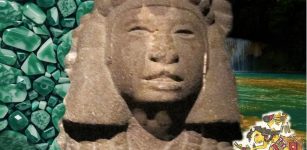 Chalchihuitlicue: Beautiful, Dangerous, Changeable And Unpredictable Water Goddess In Aztec Mythology
Featured Stories | Mar 20, 2024
Chalchihuitlicue: Beautiful, Dangerous, Changeable And Unpredictable Water Goddess In Aztec Mythology
Featured Stories | Mar 20, 2024 -
 17 Mysterious Miniature Coffins In Scotland Remain An Unsolved Enigma
Artifacts | Feb 24, 2018
17 Mysterious Miniature Coffins In Scotland Remain An Unsolved Enigma
Artifacts | Feb 24, 2018


